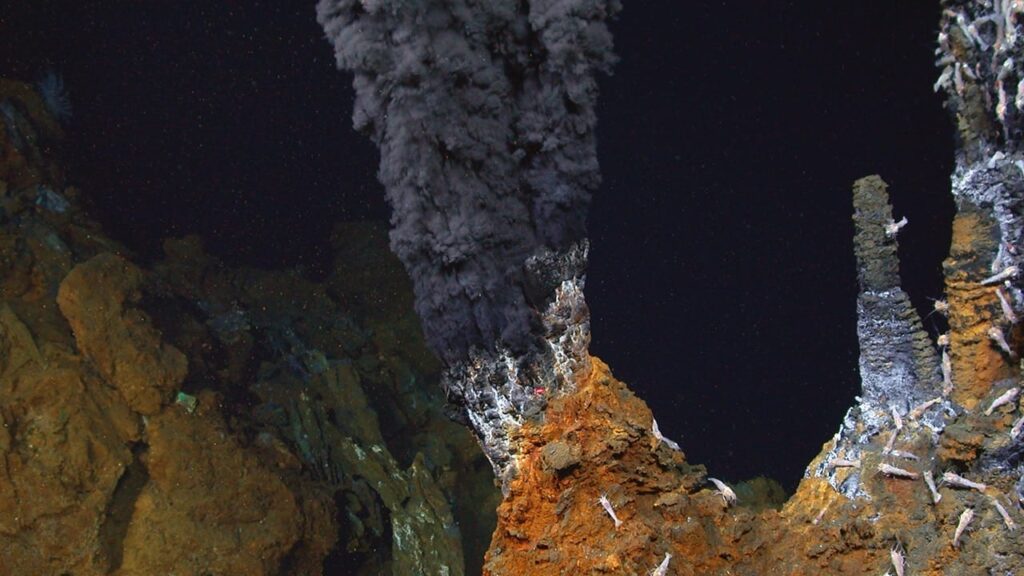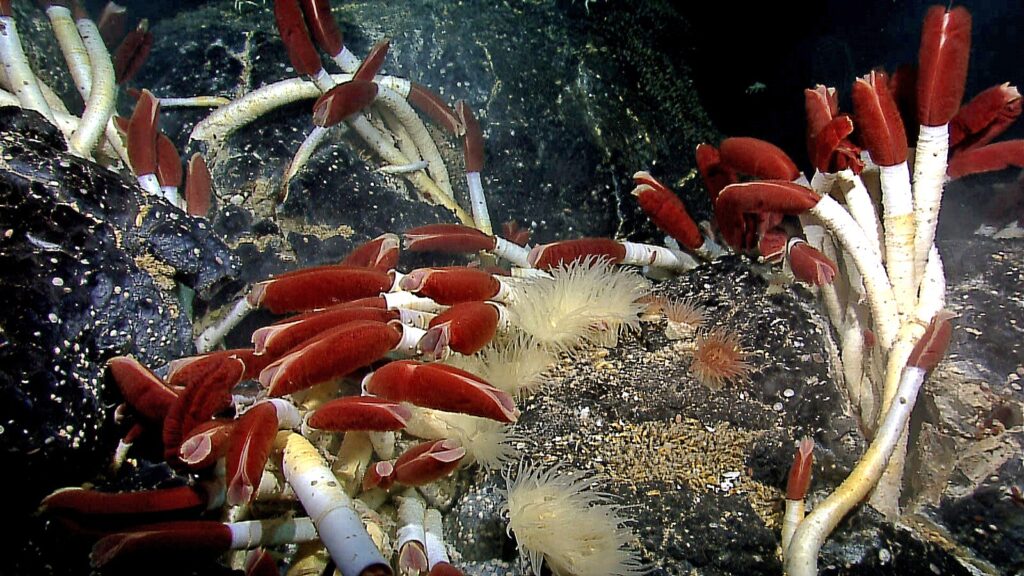Deep down beneath the ocean’s surface, where magma forms new seafloor, seawater temperatures reach over 700 degrees Fahrenheit. As this seawater swirls and heats beneath the crust, it dissolves surrounding minerals, eventually growing hot enough to breach through the crust due to building pressure. As the seawater cools, these minerals form deposits that lead to the building of the structure for each hydrothermal vent. These vents can be found all over the world along subduction zones and oceanic ridges, including the Pacific, Atlantic, Indian, Southern, and Arctic Ocean.

Hydrothermal vents are not only unique in structure, but they also can appear different based on the fluids they are emitting. For example, black smokers are the hottest hydrothermal vents at around 750 degrees Fahrenheit and the black particle filled fluid it gets it’s name from contains mostly sulfide minerals. When these minerals solidify, they create tall black chimney- like structures that can reach up to 180 feet in length. In comparison, some hydrothermal vents are called white smokers, and expel slightly cooler water containing a mineral content of barium, calcium, and silicon, which gives it the white smoky appearance. These minerals also solidify to form white chimney structures, but they do not grow as tall as black chimneys, only reaching around 148 feet. While these minerals contribute to the appearance and formation of the vents, they also are the key ingredient in supplying nutrients to the ecosystem surrounding the vents.
While humans would find hydrothermal vents completely uninhabitable, certain bacteria are capable of taking the chemicals/ minerals in the vents, such as hydrogen sulfide and creating sugar. These microbes are then eaten by larger organisms such as tube worms, mussels, and shrimp. Due to the harsh conditions of this ecosystem, lots of symbiotic relationships are formed. Giant tube worms rely on chemosynthetic bacteria in their guts to convert the sulfur from the surrounding vents into usable energy. Certain species are actually endemic to these vents such as yeti crabs and scaly-foot gastropods.

These amazing ecosystems weren’t even discovered until 1977 due to the difficult location. The intense pressure, depth, and temperature make it impossible for humans alone to reach. Scientists need to use remotely operated vehicles (ROVs) to be able to even reach the vents. These vehicles are equipped with useful tools such as cameras, lights, and arms that can collect samples. Due to the technology needed to explore the vents, each venture can be quite expensive to conduct. Further research into hydrothermal vents could even help scientists discover more about the orgins of life. Some of the earliest known evidence of microbial life comes from rocks that were found in Canada that originated from hydrothermal vents around 4 billion years ago. Even the orgins of multicellular life, with fossils dating over 500 million years old can use evidence from hydrothermal vents, which have animal fossils as old as 440 million years ago. These vents also help regulate the ocean’s chemistry via the transportation of heat and chemicals from beneath the Earths crust to the open ocean.